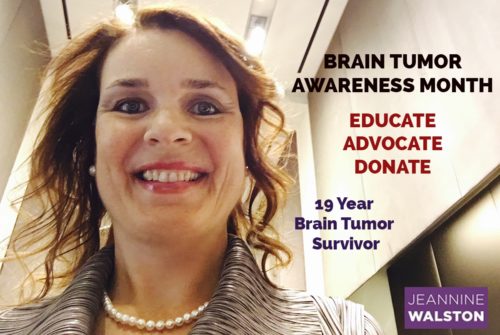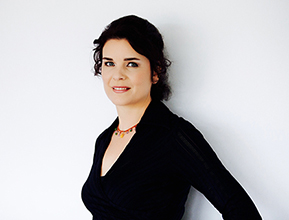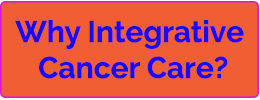
Unfortunately, people who have brain tumors often experience complexities. Each type of a brain tumor can impact many factors influencing quality of life, survival, and prevention. National Brain Tumor Awareness Month is a time for brain tumor patients, caregivers, and those working in the field to educate the public about brain tumors, and emphasize the importance of donations supporting brain tumor research.
Learn from 10 Wow Factors about Brain Tumor Awareness Month from a 19 Year Survivor that highlights information about the disease. My goal is for people to understand these brain tumor facts, with knowledge and aspiration to make a difference. That includes insights and inspiration to fund research. As certain people already know, time is of the essence.
- Among the most common types of cancer, brain and other nervous system cancer represents 1.4% of all new cancer cases in the United States and #16 on the list of cancer types from the National Cancer Institute.
- Brain and nervous system cancer are most frequently diagnosed among people aged 55-64, with a median age at 58.
- Nearly 80,000 new cases of primary brain tumors are expected to be diagnosed this year. Approximately one-third of 32% of brain and CNS tumors are malignant. This includes more than 26,000 primary malignant and 53,000 non-malignant brain tumors. There are nearly 700,000 people in the U.S. living with a primary brain and central nervous system tumor.
- Pathologists often group brain tumors by Grade I to IV. Statistics indicate that low-grade tumors (Grades I and II) grow more slowly than cells from high-grade tumors (Grades III and IV).
- The most prevalent brain tumor types in adults are meningiomas (making 36.4% of all primary brain tumors) and gliomas (making 80% of malignant brain tumors). Gliomas include glioblastoma, ependymomas, astrocytomas, and oligodendrogliomas. Yet, there are more than about 120 different types of brain tumors and many with their own multitude of subtypes.
- Brain tumor patients are impacted by the type, location, size, molecular markers, tumor behavior, histology, age, culture, finances, education, previous health challenges, and other demographics.
- Brain tumor symptoms can depend on many factors. In the process, along with some components listed in #6, symptoms can be caused by tumors pressing on a nerve or harming a part of the brain; when a tumor blocks some of the fluid that flows through and around the brain; or, when the brain swells as a result of the buildup of fluid.
- The brain tumor’s location can make a strong impact on cognitive functions and functionality in the body. More than any other cancer, the reality is that brain tumors can have lasting and life-altering cognitive, physical, and psychological challenges in a patient’s life. Treatments, short and long-term effects, and ongoing medications can also play a role. Brain locations include the frontal lobe, olfactory bulb, temporal lobe, primary motor cortex, central sulcus, primary somatosensory cortex, parietal lobe, occipital lobe, and cerebellum.
- In 2017, the estimated deaths are 16,700 people with a primary malignant and central nervous system brain tumor. Brain and other nervous system cancer is the tenth leading cause of cancer death in the United States. The deaths are highest at 24.5% among people aged 65-74, with the median age at 65. Ages 55-64 are at 24.2%, compared to people younger than 20 years of age with 3.6% who die.
- More brain tumor research is paramount. Challenges can be transformed into opportunities and adversity into actions. Consider making a donation to support brain tumor research.
Many people can make a difference. Think about giving a donation, and if that is not possible, instead educate, advocate, volunteer, ask for others to donate and help those in need.
In my journey, I was diagnosed with a brain tumor in March of 1998 when I lived in Washington, DC working in the U.S. Congress. I’ll never forget that day when I was diagnosed, my first awake brain surgery, trying to heal, and going to a support group where I met Lionel and Sandy Chaiken, as well as eventually meeting Nike Beddow whose sister Dana Daczkowski had brain cancer. All four of them founded The Race for Hope – DC to raise funds for brain tumor research. Lionel and Sandy lost their 31 year old daughter, Pamela, to a brain tumor and began to raise funds for research in her memory. Dana was five years into her own battle with brain cancer in 1998 and wanted to raise public awareness of this devastating disease. She and her sister, Nike, decided that a 5K run/walk would be a healthy way to reach other patients, survivors, and their families.
I felt inspired to volunteer for several years when living in DC, including weekly meetings with a team of people putting together the event and fundraising to companies in DC, my family, and friends. At the time, money raised went to the Brain Tumor Society, and eventually two non-profits: National Brain Tumor Society and Accelerate Brain Cancer Cure (ABC2). The Race for Hope is one of Washington, DC’s most successful volunteer events, raising over $29 million, and one of the country’s largest fundraisers for the brain tumor community.
Now, in National Brain Tumor Awareness Month, The 2017 Race for Hope – DC is celebrating 20 years of supporting brain tumor research on May 7, 2017, in Washington DC. The event will be a fun and inspiring way to join forces in the fight against brain tumors by raising funds for research. For those that live in Washington, DC, surrounding areas, or able to travel, the experience will be meaningful. Additionally, donations for the Race for Hope – DC that supports brain tumor research.
Know there are other ways to spread the word. In honor of National Brain Tumor Awareness Month, Accelerate Brain Cancer Cure is also encouraging support for brain cancer research with a fabulous t-shirt “Go Gray in May“!
Lobbying Congress is also occurring on May 8 and 9 at Head to the Hill in Washington, DC, which is a powerful vehicle to share the voice of brain tumor patients, with specific requests to those in the Senate and House of Representatives. Furthermore, communication must continue throughout the year as an advocate with specific requests and follow-up.
Be inspired. Make a difference.
Educate. Advocate. Donate.
Time is of the essence.





